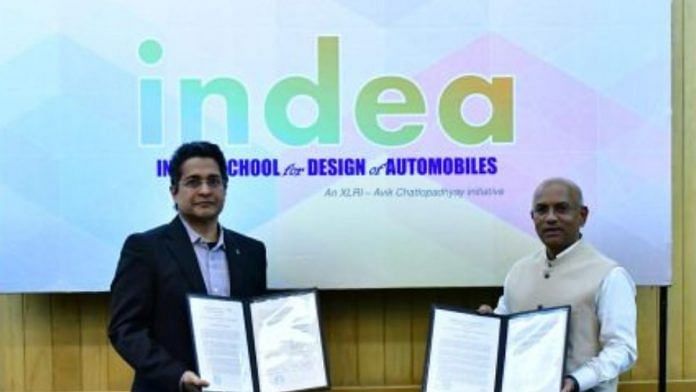What are the problems with automotive design in India? Quite a few, when you think of it, because most cars sold in India are not really designed here. Top vehicle designers, such as Mahindra’s Pratap Bose and Tata Motors’ Martin Uhlarik, primarily sit at studios in the United Kingdom. Even Royal Enfield, which has a large design and engineering facility in Chennai, operates from that country.
This is partially because the UK, which seems to have lost its prowess as an automotive manufacturing hub, still produces some of the world’s top automotive designers and engineers. It should be no surprise, then, that most Formula 1 teams are based in the UK. Adrian Newey, widely considered the greatest F1 aerodynamicist and designer of the past two decades, is a Brit. And so is Ross Brawn, the chief engineer at Ferrari during Michael Schumacher’s reign.
Of course, talent does not equal manufacturing success. But without talent, building up an industry is impossible. One only needs to look across the border at China. I have spoken about BYD and the Shanghai Automotive Industry Corporation (SAIC) time and again, and how they have succeeded. Look at how far Chinese automotive design has come in just two decades. I travelled to the country multiple times in the early 2000s and remember how cars that wore a Chinese marque were considered déclassé. A typical Chinese-brand sedan literally looked like three boxes stuck together with glue back then.
But if you look at a Chinese car today, you would be hard pressed to distinguish it from a European one. Just look at the BYD Seal and Sealion. And even if the MG Windsor EV wouldn’t win awards for its design, it is surprisingly aerodynamic with a drag coefficient of just 0.27 (the lower this number is, the better). And then there is Xiaomi, the maker of smartphones that has now produced the gorgeous SU7. While some of the designers at these companies are European – including BYD’s Global Head of Design Wolfgang Egger, who is German – the main design studios are all in China.
To be fair, India isn’t that far behind, with an increasing number of automotive design studios as well as global design project teams now based in the country. In fact, Mahindra is expanding its design studio at its facility in Kandivali in Mumbai, and even Maruti-Suzuki and Hyundai have design teams in India.
Also read: Never been a better time to buy a car—even models that never gave discounts seeing price cuts
Not just fancy sketches
Automotive design is more than just a car’s shell. User Interface (UI) and User Experience (UX) also matter. The type and size of font on the instrument cluster and infotainment system, and even the amount of information to display on a screen, are crucial design components. Some people might find the daytime running lights on cars irritating, but for many carmakers, they are an essential part of a vehicle and brand’s design language.
And car design is not just the fancy sketches you see companies showing off. I would be overjoyed if a manufacturer actually made a car with the overly pronounced flared wheel arches and 25-inch wheels in most sketches.
Design is so much about team management and product integration. Handling the egos of hundreds of engineers and designers is not easy, and is possibly worse than handling a newsroom.
Some design elements look cool but just won’t work in real life. It takes a trained team to recognise these potential hiccups, and ensure that they don’t lead to expensive fixes toward the end of the manufacturing process. There are also the bean counters – every designer and engineer’s worst enemy – because at the end of the day, everything is about the money, honey.
Educating designers
Many design graduates, when they join automotive firms, are a bit raw and need 18-24 months to get up to speed. And it’s a problem Avik Chattopadhyay wants to fix. A 22-year veteran of the automotive industry, he is now establishing the Indian School for Design of Automobiles (INDEA) at the Xavier School of Management in Jhajjar, Haryana. It’s going to have an 18-month master’s programme in automotive design that will produce finished designers.
More importantly, Chattopadhyay wants to produce designers who can work well in separate teams. The main reason he has tied up with one of India’s premier b-schools is not because it is his alma mater, but because he believes aspects like design management and product integration are vital skills for young designers to learn, and are taught best at a business school.
Would this work? Chattopadhyay certainly thinks so. “Design is a value addition. Without design, how are we going to become a $10-15 trillion economy? And how long can we depend on importing design and designers?” Design is so important that Chattopadhyay says it shouldn’t be left solely to students specialising in the discipline. “If there is a capable humanities student and they clear the selection process, they should join. We have to invest in design and designers, just like the Chinese have, if we are to become a global automotive hub.”
Chattopadhyay, despite his strong industry ties, has been disappointed with the lack of financial support for his educational initiative, which starts with a batch of 30 students in 2026. However, he believes there will be good news soon. He doesn’t know if his course will work, but, as he pointed out during our conversation – without trying, there can be no success.
@kushanmitra is an automotive journalist based in New Delhi. Views are personal.
(Edited by Zoya Bhatti)






